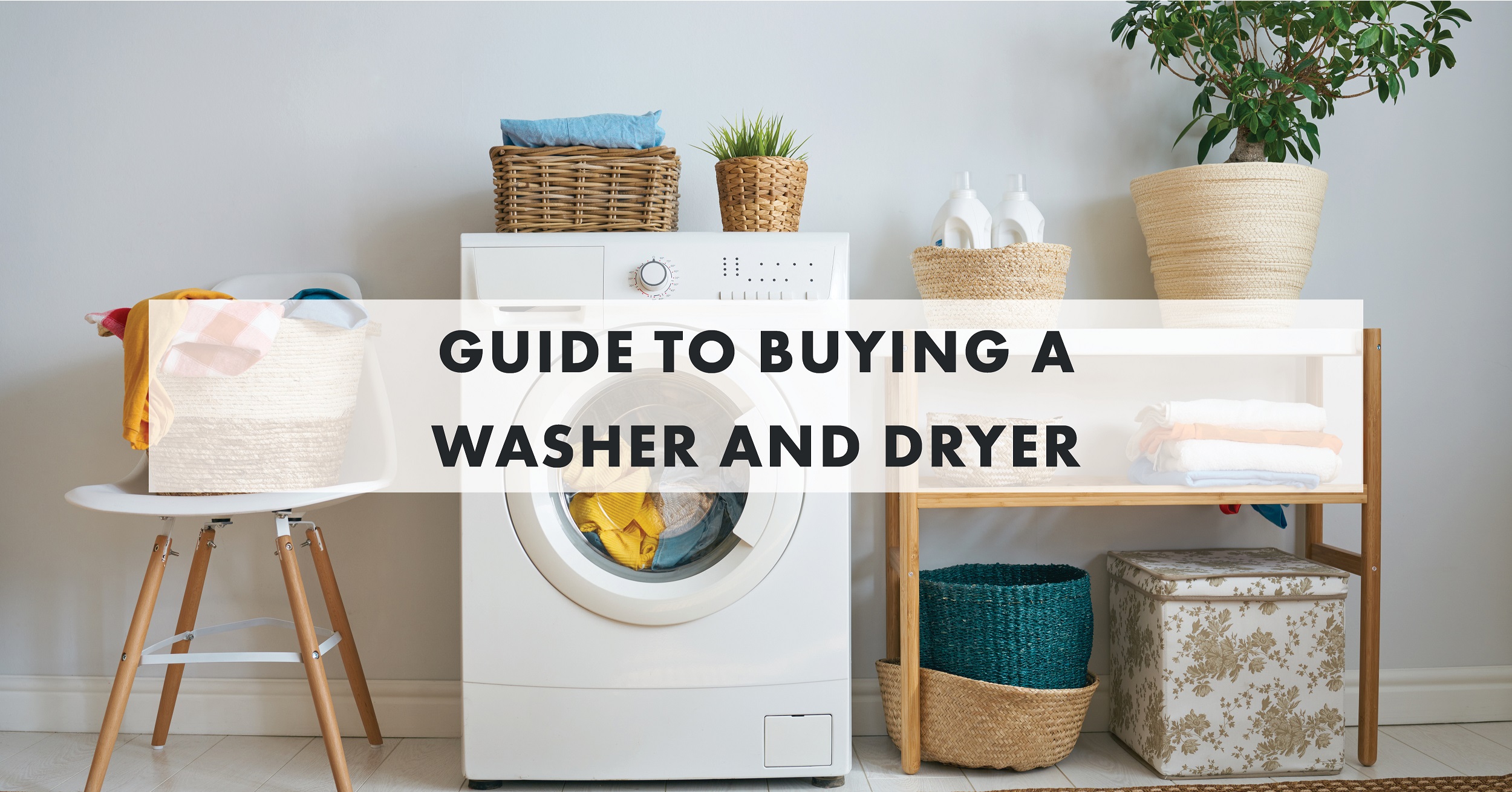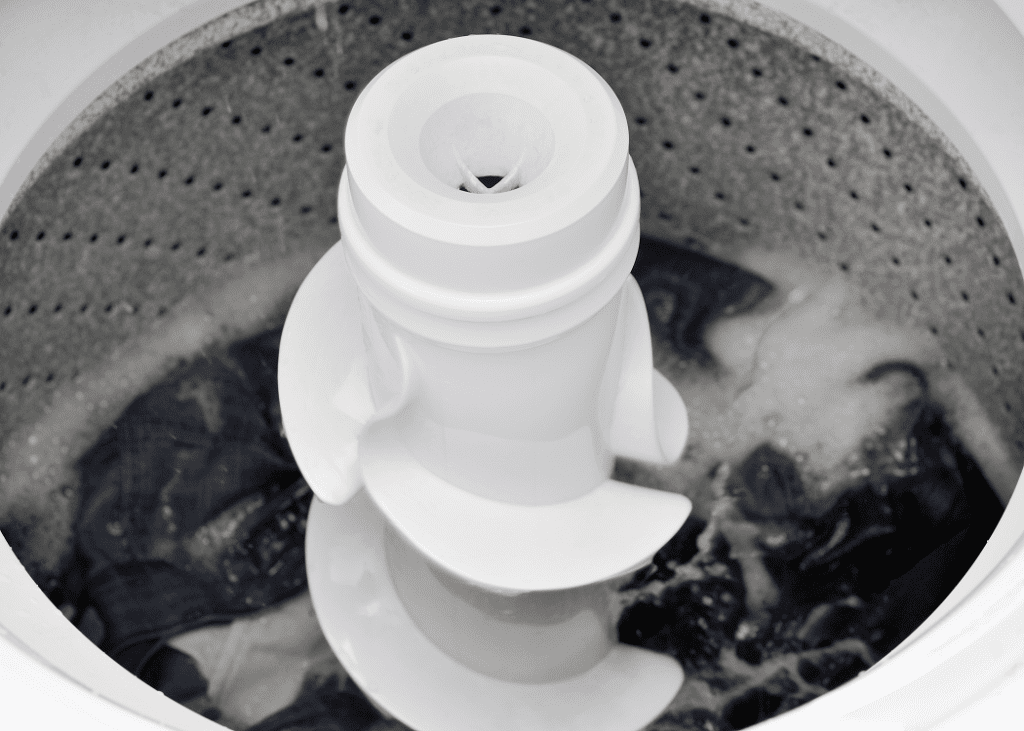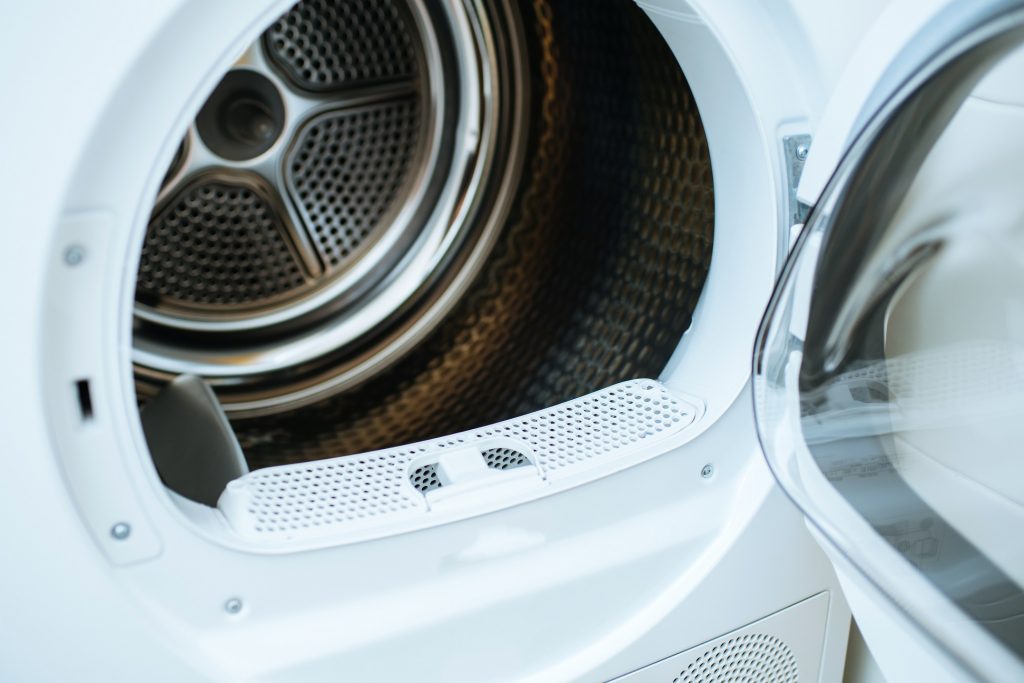
By Alena Kairys
Feb 24, 2022Not everyone enjoys doing laundry, but having the right washer and dryer for your needs can make it less of a chore, and maybe even enjoyable! When you’re shopping for a new washer and dryer, use this guide to help find the ideal combo for you.
Factors to Consider
Size – Always measure the space of your laundry area and compare it to the dimensions of the appliances before buying. Measuring the doorways leading into the space is also a wise idea. If you go with a vented dryer, you will need sufficient space behind the unit to run a ventilation duct.
Price – The cost of a washing machine and dryer can run from several hundred dollars to over one thousand per unit. Consider the model’s energy rating, as it can save you money over time.
Lifestyle– Think about how often you do laundry and how large your average load is. For example, if you do multiple washes each week, pick models with a large capacity and a quicker drying time.
Washers
Top Load
Top loading washing machines are one of the most common types of washing machines and tend to be more affordable. Like the name suggests, the loading door is on top. Traditional top load washers have an agitator inside the washing drum, which whips the clothes around it to clean them. This method is effective for removing dirt and stains, but it can be rough on your clothing. Alternatively, high efficiency (HE) top loading machines have an impeller unit. The bottom of the drum has a wash plate that spins at a very high speed to distribute water throughout the load. This type of cleaning is gentler on your laundry and is more eco-friendly than its agitator counterpart. Although top loading washers can’t be stacked on another unit, you can purchase a laundry center if you’re short on horizontal space but have plenty of vertical room. These units have a washer on the bottom and a dryer on the top, ideal for compact homes.

Front Load
Front loading machines are the second main kind of washing machines available. These trendy machines are loaded from the front and feature a porthole door. With front load washers, there is no agitator; the spinning action of the washing drum gets the items clean when they’re rubbed against each other during the cycle. This process is gentle on clothes and more eco-friendly since it uses less water than a top load washer. There is more versatility with this type of washer because you can place it next to the dryer or stack the dryer on top to save space. Keep in mind that front loading washers may be more susceptible to leaking and mold. Since they use less water, it may be difficult clean very smelly or stained clothes. Although these washing machines tend to be more expensive, they could be cost effective if you do many loads of laundry.
Dryers
Vented
With a vented dryer, a heating element heats up air, which is blown by a fan into the tumbler to dry your clothes. The hot air is expelled through a vent to the outside of your home. This traditional type of dryer is more budget-friendly and will dry your clothes in a short amount of time. It’s important to clean the vent once a year to avoid a fire risk.

Ventless
Ventless dryers don’t have an external vent, they recirculate the heat back into the machine using either a heat pump or through a condensation method. A heat pump dryer simply reuses air by passing it through a compressor to reheat it and return to the tumbler. A condenser dryer takes the old hot air, cools it using a condenser, and reheats it again. The water that accumulates from this process can either drip out a duct connected to your plumbing or collect in a reservoir drawer on the machine. Ventless dryers use significantly less energy than vented dryers, making them more energy efficient, but they typically have a higher upfront cost. It’s critical to change the lint filters with ventless dryers every time since the air needs to flow freely into the main chamber. Since the machine goes through a recirculating process, it may take slightly longer to dry your clothes.
Your washer and dryer are just as essential as any other major appliance in your home, and it’s important to understand what features you need in your next model to best serve your needs. With so many options on the market, you’re sure to find the perfect pair to add to your home.
If you have questions about buying a home, contact one of our licensed Mortgage Loan Originators. If you’re ready to begin the home buying process, click here to get started!
These blogs are for informational purposes only. Make sure you understand the features associated with the loan program you choose, and that it meets your unique financial needs. Subject to Debt-to-Income and Underwriting requirements. This is not a credit decision or a commitment to lend. Eligibility is subject to completion of an application and verification of home ownership, occupancy, title, income, employment, credit, home value, collateral, and underwriting requirements. Not all programs are available in all areas. Offers may vary and are subject to change at any time without notice. Should you have any questions about the information provided, please contact us.